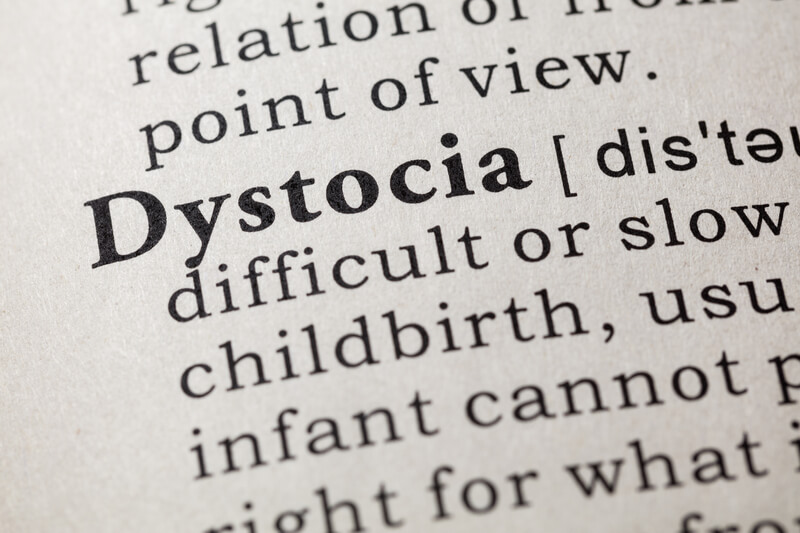What Is Shoulder Dystocia?
Shoulder dystocia (dis-TOE-see-ah) can cause a number of other serious complications for both mother and baby and often times associated with brachial plexus birth injuries.
Dystocia comes from an Ancient Greek term literally meaning “difficult childbirth.” Shoulder dystocia is a delivery room emergency in which, after the baby’s head has been delivered, the shoulder becomes stuck behind the mother’s pubic bone, trapping the child and preventing labor from progressing.
If not properly treated, shoulder dystocia can result in stretching or rupture of the brachial plexus nerves that provide feeling and movement to the arms, even up to the point of nerve roots being torn out of the spinal cord. The result of this can be a Erb’s palsy or the less-common Klumpke paralysis.
Medical professionals are trained to perform different maneuvers to safely release the shoulder that is stuck behind the mother’s pubic bone. Medical providers are also taught not to pull on the baby’s head during a shoulder dystocia, since this can cause stretching or tearing of the brachial plexus. Too many times the medical providers do not follow the proper procedures and as a result the child is injured.
Other injuries possible to babies as a result of untreated shoulder dystocia include hypoxia (oxygen not reaching the brain), cerebral palsy, and even death. Mothers may also face severe consequences from untreated shoulder dystocia, including heavy postpartum bleeding as well as damage to the pelvis, uterus, or vagina.
Is Shoulder Dystocia Preventable?
There are a number of well-known risk factors for shoulder dystocia that an obstetrician or midwife should be on the watch for. Some cases, however, occur without the presence of known risk factors. The most common of these known risk factors are:
- large fetal size (macrosomia, pronounced mah-kro-SO-mi-ah)
- preexisting diabetes or gestational diabetes
- maternal obesity
- pregnancy going past term (40 weeks)
- a prior shoulder dystocia during a previous delivery
If these conditions are detected at prenatal appointments, a healthcare provider should make plans in case shoulder dystocia occurs during delivery. In cases of special concern, a C-section may be scheduled ahead of the due date.
Is Shoulder Dystocia Treatable?
The signs of shoulder dystocia are clear and should be well-known by birth attendants. These include the “turtle sign” in which a baby’s head retracts into the birth canal, like a turtle tucking into its shell. In general, if the shoulders are not delivered immediately after the head, shoulder dystocia becomes a concern.
In fact, medical providers are trained to take several steps to free the baby’s shoulder and prevent harm to both mother and child.
It is critical that doctors, nurses, and midwives not pull too much on the baby’s head, since this can result in injuries to the brachial plexus.
If Shoulder Dystocia is Preventable and Treatable, Why Was My Child Injured?
If your child was injured during delivery, it may well be that medical personnel failed to notice or act on warning signs at prenatal appointments, allowing a vaginal birth to occur without proper precautions, or even when a C-section would have been the safer option.
Or, it could be that delivery room staff did not did not execute the proper steps to free the trapped shoulder.
Liro Willer Law: Preeminent Experts in Shoulder Dystocia
Nationwide, only a handful of firms specialize in shoulder dystocia birth injuries. Liro Willer Law is one of them. Dedicated to this issue, Liro Willer is most qualified to represent your case.
Call the office today for a free consultation. Whatever the particulars of your family’s situation, you can be sure Liro Willer Law will treat you like family.
.
